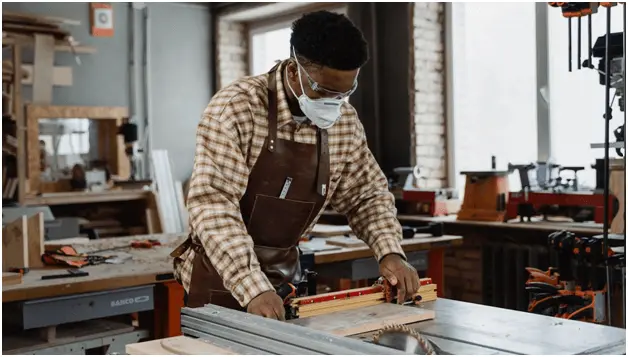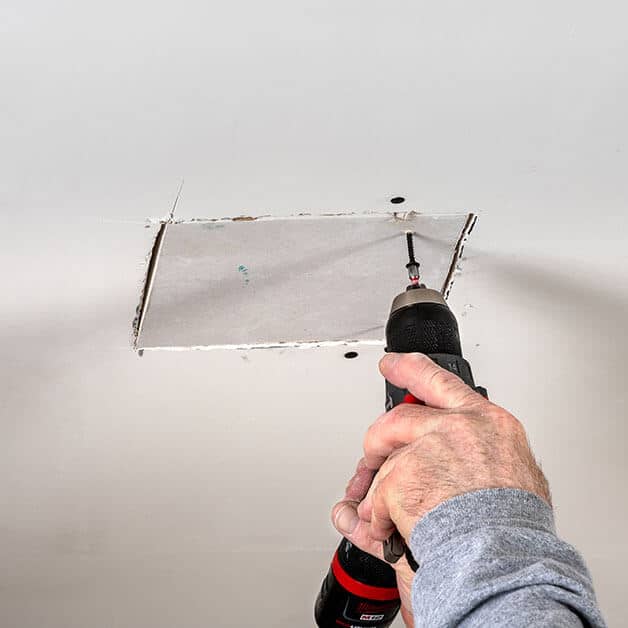Discover the most effective Practices for Successful Drywall Fixing and Setup
The art of drywall repair and installation needs a mix of ability and accuracy. Mastering the crucial tools is essential for accomplishing a seamless coating. Comprehending the detailed process can make a substantial difference in the final result. Appropriate methods for mudding and taping are also essential. What remains is the understanding of maintenance that guarantees durability. These elements with each other develop a polished result worth exploring even more.

Essential Tools for Drywall Fixing and Setup
When carrying out drywall repair service and setup, having the right tools can substantially boost the efficiency and top quality of the job. An energy knife is crucial for cutting drywall sheets precisely, while a drywall saw can assist in making much more elaborate cuts. Taping blades, offered in various sizes, are vital for applying joint substance efficiently and evenly. A drywall sander, ideally with a dirt collection feature, assists attain a polished coating, decreasing the need for considerable cleaning.
Furthermore, a measuring tape assurances accurate measurements, and a level makes certain that installments are straight and plumb. Safety and security gear, including dust masks and safety glasses, ought to not be forgotten to shield against particles and dirt. A stud finder help in finding framing members, ensuring safe setup. By furnishing oneself with these important devices, the repair work and setup process ends up being more manageable and results in a professional-quality result.

Step-by-Step Overview to Patching Holes
Patching openings in drywall calls for a methodical method to ensure a smooth repair work. Initially, the area around the opening have to be cleaned and any loose debris removed. For little holes, a putty knife can be made use of to apply a lightweight spackle, pushing it right into the hole and smoothing the surface area. After it dries, sanding is vital to produce a level surface. For larger holes, a patch of drywall may be required. This entails reducing an item of drywall a little bigger than the opening, protecting it to the wall surface with screws, and using joint substance to cover the seams. When the compound dries out, it must be sanded smooth. Ultimately, topping the patched area prior to painting will certainly assure an even coating. Complying with these steps will certainly cause a professional-looking repair service that mixes seamlessly with the bordering wall surface.
Methods for Smooth Drywall Installment
Accomplishing seamless drywall installation demands careful preparation and implementation. It is essential to gauge and cut drywall sheets precisely to minimize voids. Making use of an energy blade, installers should rack up the board prior to snapping it along the cut line, making sure clean sides. Effectively lining up the sheets is vital; beginning with the leading and working down helps preserve uniformity.
Attaching drywall to the studs needs constant spacing, normally every 16 inches, using screws rather than nails for much better hold. This approach reduces the danger of pops gradually. Furthermore, staggering the seams between sheets boosts structural honesty and minimizes the presence of joints.
Lastly, utilizing the appropriate thickness of drywall for specific locations-- such as moisture-resistant types in washrooms-- further contributes to a flawless finish. Adhering to these techniques will cause a professional-looking and smooth installation, establishing the stage for the subsequent ending up procedures.
Finishing Touches: Taping and Mudding
Finishing touches, such as mudding and taping, play an essential role in attaining a sleek drywall surface. Insulation includes using a slim strip of drywall tape over the joints and joints, making sure a seamless appearance. This procedure aids protect against splits and produces a strong bond in between drywall sheets. It is vital to pick the ideal kind of tape, with paper and fiberglass fit together being one of the most typical options.
Mudding, or applying joint compound, complies with taping. This substance fills out voids and ravel the surface area for an uniform surface. It is typically used in several layers, with each layer requiring to completely dry prior to fining click here sand. Correct strategy involves feathering the sides to blend the compound into the surrounding drywall, minimizing visibility.
When completed appropriately, mudding and taping boost both the aesthetic and architectural stability of the drywall installation, resulting in a professional-quality coating.
Tips for Maintaining Your Drywall After Installment

Furthermore, maintaining a consistent interior humidity degree can stop bending or mold development. Making use of a dehumidifier in damp locations, like basements, is recommended. It's additionally advantageous to occasionally repaint areas that reveal wear, as this secures the underlying material. Lastly, when relocating furniture or installing components, caution should be worked out to stay clear of harming the drywall. By following these upkeep ideas, house owners can extend the life of their drywall, guarding it stays an eye-catching feature of their insides.
Frequently Asked Concerns
What Safety And Security Gear Is Needed for Drywall Repair Service and Installation?
For drywall repair work and installment, vital safety equipment includes security goggles to secure eyes, dirt masks to avoid inhalation of particles, gloves for hand protection, and knee pads for comfort throughout extended kneeling. drywall contractor.
Just how Do I Establish the Drywall Thickness Needed for My Task?
To determine the drywall density needed for a project, one must consider the wall surface's architectural demands, regional building regulations, and the planned usage of the area, typically deciding for 5/8-inch or 1/2-inch drywall.
Can I Repair Drywall Without Removing Furniture From the Area?
Yes, drywall can be fixed without getting rid of furniture from the area. Mindful preparation and safety actions can minimize mess, permitting effective repair services while keeping bordering products risk-free from dirt and damage during the procedure.
What Sorts of Drywall Are Ideal for Different Environments?
Moisture-resistant drywall is perfect for shower rooms and kitchens, while soundproof drywall fits shared wall surfaces in apartments. Fire-rated drywall is best for garages, and conventional drywall works well as a whole living locations, making certain sturdiness and viability for various settings.
How Lengthy Does It Consider Drywall Mud to Dry Entirely?
Drywall mud commonly takes 24 to 48 hours to completely dry entirely, depending on variables like humidity and temperature (drywall contractors). Thicker applications may require longer drying out times, while thinner layers can dry faster. Correct air flow aids drying
The art of drywall repair service and installation requires a blend of ability and precision. When carrying out drywall repair service and installment, having the right tools can greatly enhance the effectiveness and top quality of the work. An utility knife is essential for reducing drywall sheets exactly, while a drywall saw can help in making a lot more elaborate cuts. Achieving smooth drywall setup needs mindful planning and implementation. Moisture-resistant drywall is suitable for cooking areas and restrooms, while soundproof drywall matches shared walls in apartments.